Hyundai Bayon vs Mazda CX-5 – Which car suits you better?
Both models have their strengths – but which one suits you more?
Compare performance, efficiency, price and space directly: Hyundai Bayon or Mazda CX-5?
Costs and Efficiency:
Price and efficiency are key factors when choosing a car – and this is often where the real differences emerge.
Hyundai Bayon has a decisively advantage in terms of price – it starts at 20100 £, while the Mazda CX-5 costs 30000 £. That’s a price difference of around 9943 £.
Fuel consumption also shows a difference: Hyundai Bayon manages with 5.40 L and is therefore clearly perceptible more efficient than the Mazda CX-5 with 7 L. The difference is about 1.60 L per 100 km.
Engine and Performance:
Power, torque and acceleration are the classic benchmarks for car enthusiasts – and here, some clear differences start to show.
When it comes to engine power, the Mazda CX-5 has a clearly perceptible edge – offering 141 HP compared to 100 HP. That’s roughly 41 HP more horsepower.
In acceleration from 0 to 100 km/h, the Mazda CX-5 is barely noticeable quicker – completing the sprint in 10.50 s, while the Hyundai Bayon takes 11.30 s. That’s about 0.80 s faster.
In terms of top speed, the Mazda CX-5 performs barely noticeable better – reaching 195 km/h, while the Hyundai Bayon tops out at 179 km/h. The difference is around 16 km/h.
There’s also a difference in torque: Mazda CX-5 pulls somewhat stronger with 238 Nm compared to 200 Nm. That’s about 38 Nm difference.
Space and Everyday Use:
Cabin size, boot volume and payload all play a role in everyday practicality. Here, comfort and flexibility make the difference.
Both vehicles offer seating for 5 people.
In curb weight, Hyundai Bayon is distinct lighter – 1170 kg compared to 1629 kg. The difference is around 459 kg.
In terms of boot space, the Mazda CX-5 offers clearly perceptible more room – 583 L compared to 411 L. That’s a difference of about 172 L.
In maximum load capacity, the Mazda CX-5 performs decisively better – up to 2019 L, which is about 814 L more than the Hyundai Bayon.
Who comes out on top?
Overall, the Mazda CX-5 shows itself to be wins the duel decisively and secures the title of DriveDuel Champion.
It convinces with the more balanced overall package and proves to be the more versatile choice for everyday use.
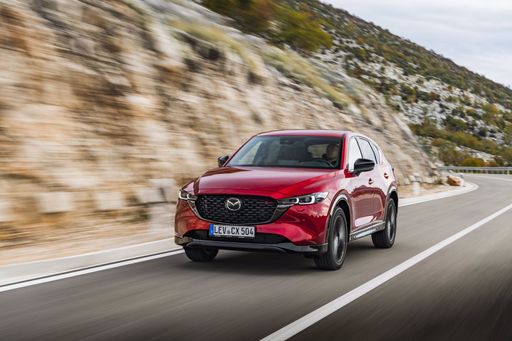
Mazda CX-5
Hyundai Bayon
The Hyundai Bayon is a compact crossover that effortlessly merges practicality with modern design. Its sleek exterior and spacious interior make it an ideal choice for urban settings and longer journeys alike. With a focus on comfort and connectivity, this vehicle provides a smooth driving experience paired with advanced technology features.
details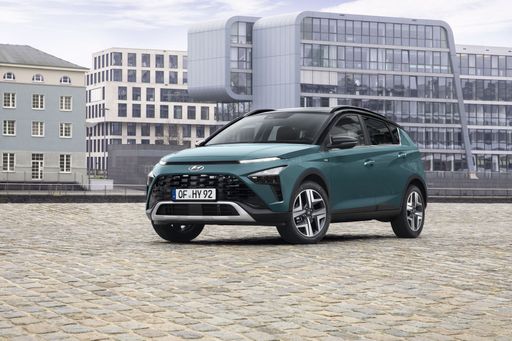 @ hyundai.news
@ hyundai.news
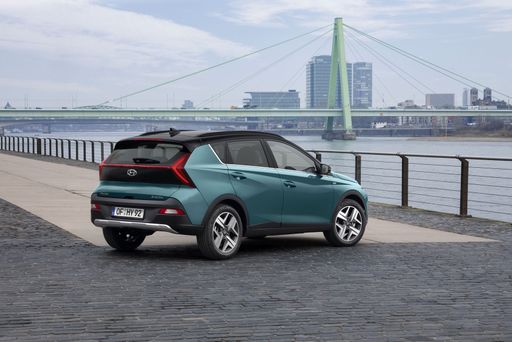 @ hyundai.news
@ hyundai.news
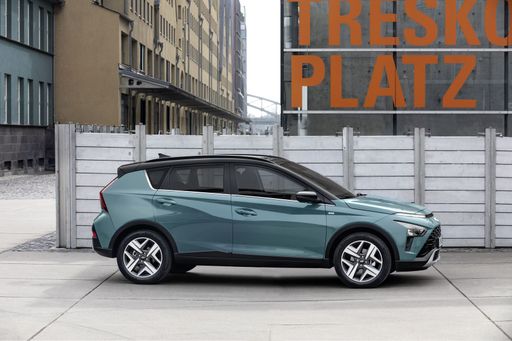 @ hyundai.news
@ hyundai.news
 @ hyundai.news
@ hyundai.news
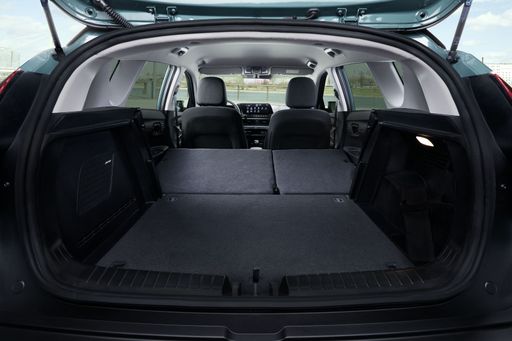 @ hyundai.news
@ hyundai.news
Mazda CX-5
The Mazda CX-5 exemplifies the perfect blend of style and practicality, offering a sleek design that turns heads while providing ample space for passengers and luggage. Its refined interior boasts high-quality materials and a user-friendly interface, making every journey a comfortable experience. With its engaging driving dynamics, the CX-5 delivers both performance and efficiency, appealing to drivers who crave excitement and reliability.
details @ de.mazda-press.com
@ de.mazda-press.com
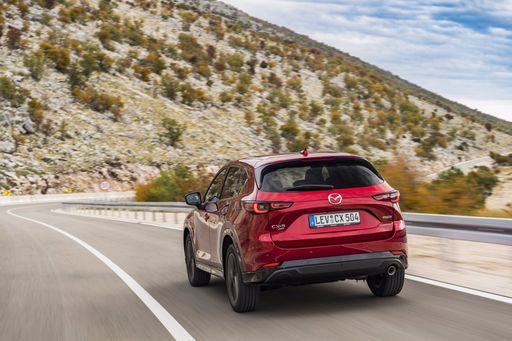 @ de.mazda-press.com
@ de.mazda-press.com
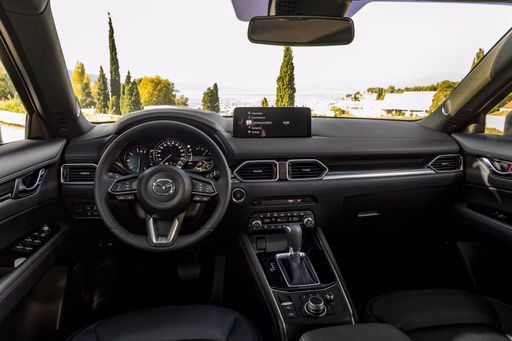 @ de.mazda-press.com
@ de.mazda-press.com

|

|
|
|
|
Costs and Consumption |
|
|---|---|
|
Price
20100 - 25800 £
|
Price
30000 £
|
|
Consumption L/100km
5.4 - 5.5 L
|
Consumption L/100km
7 L
|
|
Consumption kWh/100km
-
|
Consumption kWh/100km
-
|
|
Electric Range
-
|
Electric Range
-
|
|
Battery Capacity
-
|
Battery Capacity
-
|
|
co2
124 g/km
|
co2
157 g/km
|
|
Fuel tank capacity
40 L
|
Fuel tank capacity
56 L
|
Dimensions and Body |
|
|---|---|
|
Body Type
SUV
|
Body Type
SUV
|
|
Seats
5
|
Seats
5
|
|
Doors
5
|
Doors
5
|
|
Curb weight
1170 - 1195 kg
|
Curb weight
1629 kg
|
|
Trunk capacity
411 L
|
Trunk capacity
583 L
|
|
Length
4180 mm
|
Length
4690 mm
|
|
Width
1775 mm
|
Width
1860 mm
|
|
Height
1500 mm
|
Height
1695 mm
|
|
Max trunk capacity
1205 L
|
Max trunk capacity
2019 L
|
|
Payload
460 - 465 kg
|
Payload
-
|
Engine and Performance |
|
|---|---|
|
Engine Type
Petrol
|
Engine Type
Petrol MHEV
|
|
Transmission
Manuel, Automatic
|
Transmission
Automatic
|
|
Transmission Detail
Manual Gearbox, Dual-Clutch Automatic
|
Transmission Detail
Automatic Gearbox
|
|
Drive Type
Front-Wheel Drive
|
Drive Type
Front-Wheel Drive
|
|
Power HP
100 HP
|
Power HP
141 HP
|
|
Acceleration 0-100km/h
11.3 - 12.4 s
|
Acceleration 0-100km/h
10.50 s
|
|
Max Speed
176 - 179 km/h
|
Max Speed
195 km/h
|
|
Torque
172 - 200 Nm
|
Torque
238 Nm
|
|
Number of Cylinders
3
|
Number of Cylinders
4
|
|
Power kW
74 kW
|
Power kW
104 kW
|
|
Engine capacity
998 cm3
|
Engine capacity
2488 cm3
|
General |
|
|---|---|
|
Model Year
2024
|
Model Year
2025
|
|
CO2 Efficiency Class
D
|
CO2 Efficiency Class
F
|
|
Brand
Hyundai
|
Brand
Mazda
|
What drivetrain options does the Hyundai Bayon have?
The Hyundai Bayon is available as Front-Wheel Drive.
The prices and data displayed are estimates based on German list prices and may vary by country. This information is not legally binding.
